North Cornwall’s Lesser-known Beaches
The rugged but beautiful north Cornwall coast is famous for its dramatic cliffs, sandy sweeps and surf spots. But hidden along this coastal corridor are secret beaches and lesser-known shores, sheltered coves found only by venturing down rocky steps and along centuries-old smugglers’ paths. If you’re seeking somewhere where the only footprints along the sand are your own, where inflatables are debatable and frisbees rarely thrown, this blog is for you.
Here are some of our favourite quieter North Cornish beaches from Trevose Head to Barras Nose.
Greenaway Beach
A small sand and shingle beach not far from the golden surf beach at Polzeath and the soft sands of Daymer Bay. Running behind Greenaway is the South West Coast Path, the best way to reach the beach. The ebbing tide reveals a craggy rock bed – great exploration for budding naturalists, while in the distance is Pentire Point, marking the mouth of the Camel Estuary.
Many believe this to be the most private beach between Rock and Polzeath and definitely worth the walk. You might see the odd kite surfer trimming along the mouth of the bay, while dogs are allowed on the beach year-round to enjoy games of fetch and doggy paddles. Greenaway is a gorgeous setting to watch the sunrise and a lovely escape from the flock of its famous neighbouring beaches.
Brea Beach (also known as Rock Beach)
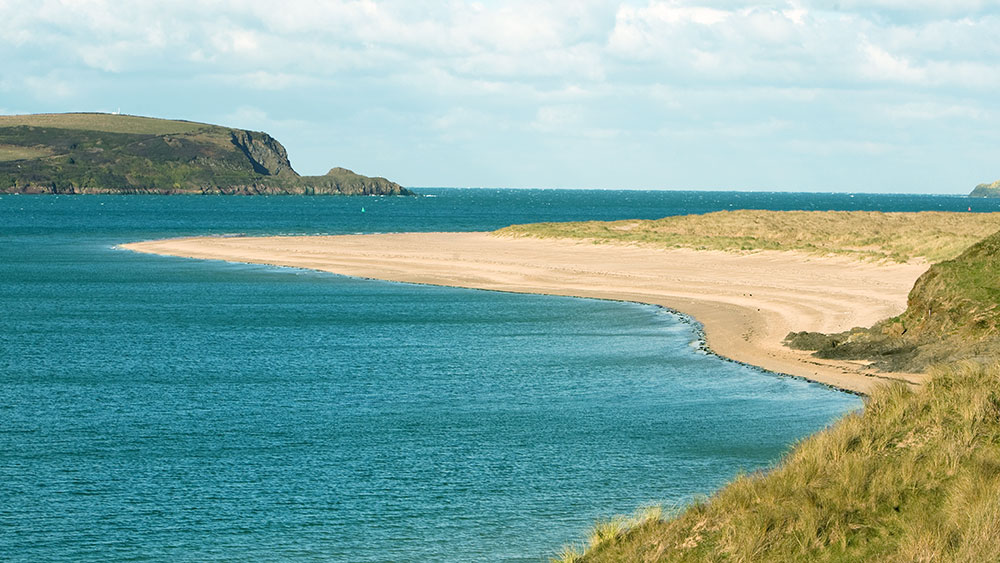
A beautiful sandy beach lapped by turquoise waters with sweeping views of the Camel Estuary. Out of season, early doors, or catching the remains of the day are the best times to visit. Set on the eastern shore of the estuary, Rock has gained a reputation as a holiday destination for the rich and famous, but perhaps its most flamboyant visitors are the wading birds that patrol the ebbing tides. Keep your eyes peeled for seals bobbing in the bay too, as they chase the mackerel through the seagrass. Behind the sand dunes lies St Enodoc Golf Club, a prestigious links course with some of the most renowned fairways in the region. The indomitable South West Coast Path hugs the backdrop, making Rock beach an irresistible stopping point for coastal ramblers and the ideal place to unscrew your thermos flask.
Harbour Cove
Not far from the bustling port of Padstow, this sandy inlet, with its spellbinding views of the estuary mouth, remains surprisingly quiet. The low tide reveals a long drift of shoreline, which gently shelves into crystal clear waters, a calmness that belies the ‘Doom Bar’ which has scuppered even the most seasoned mariners caught out by the channel swell and said to be the curse of a dying mermaid. Records show more than six hundred vessels have struck the Doom sandbar since the 1800s.
This is a dog-friendly beach where your pet is allowed to run free all year round. Pick up the coast path and explore the bracing headlands of Trevose, another of north Cornwall’s heritage coastal corridors and a place of outstanding natural beauty. Tucked under the wing of Stepper Point, this sheltered cove is ideal for all those seeking a break from Padstow’s buzzing streets.
Hawkers Cove
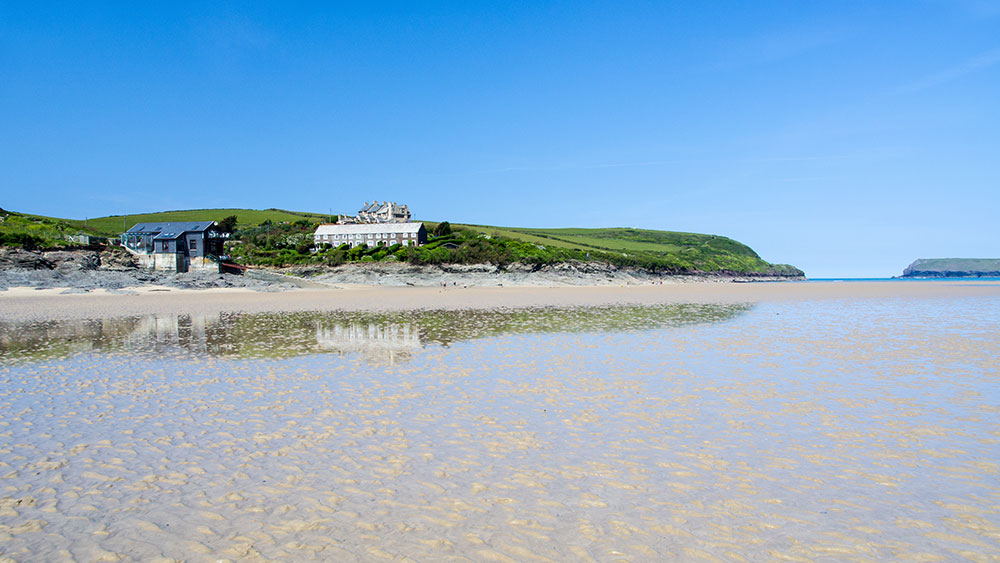
Also on the mouth of the River Camel is Hawkers Cove, a secret beach that at low tide adjoins Harbour Cove. Once home to the Padstow lifeboat, a small coastal hamlet overlooks the beach which despite its beauty remains one of the area’s quiet spots. Archaeological evidence suggests this sheltered bay was used by trading mariners during the Bronze Age, Iron Age and Roman eras. Today, trading is limited to the Hawkers Cove tea garden housed in one of the hamlet’s terraced cottages. Another coastal haunt waiting to be discovered for all those wandering the trail from Padstow to Stepper Point.
Butterhole Beach
A proper smugglers’ cove backed by steep cliffs and found along a treacherous shepherd’s path not suitable for unsteady legs. That’s why on a clear day many explorers arrive upon these crystal-blue waters by boat, kayak, or paddleboard, launching from Hawkers Cove and rounding the Stepper Point headland, a great paddling adventure for water sporters. Another of Padstow’s secret shores, if you don’t fancy the dicey descent, you can gaze at the magnificent views of Trevose Head from the tussocks above. Binoculars are a must for wildlife enthusiasts scouting the cliffs and coastline. As for the name, locals say it’s a nod to the buttery colour of the sand and the vertiginous cauldron-like cliffs above. Another of Padstow’s quiet sides, Butterhole Beach is as natural and unspoilt as they come.
Port Gaverne
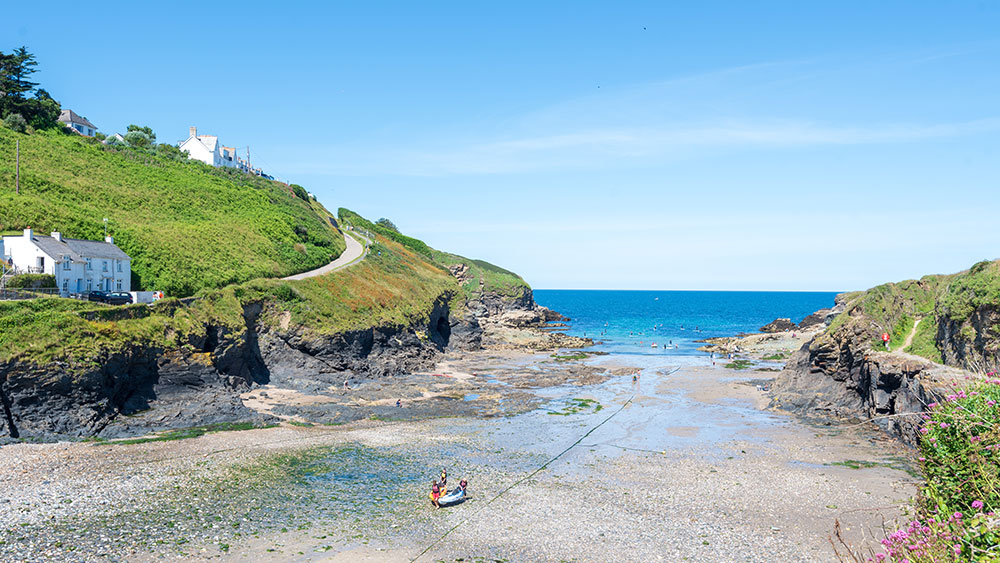
Beyond ‘The Rumps’ of Pentire Point and the rocky crags of Lundy Bay lies Port Gaverne. This hidden cove can be found on the eastern fringes of Port Isaac, a timeless fishing village many will recognise as the setting for the Doc Martin comedy drama. The ebbing tide reveals a shingle bay and lots of rock pools, ideal for children. You can read more about Cornish rock pools and what you can expect to find hiding in the sunken depths by reading our interview with Cornish-based marine wildlife expert, Heather Buttivant.
Dogs are allowed to scamper freely all year round, but parking is very limited close to the slipway so many visitors choose to park up at Port Isaac village which is only half-a-mile away and also home to some cosy old pubs, bistros and tearooms.
Trebarwith Strand
As the South West Coast Path leaves Port Isaac, weaving its way north bound for Tintagel, it passes Trebarwith Strand. Owned by the National Trust, the retreating tide reveals a long and honey-coloured shore freckled by rocks and craggy pools. This corridor of the north Cornwall coast is not known for its easily reachable beaches, but Trebarwith is an exception. Rock poolers love exploring the spooky caves and sunken worlds below the cliffs while experienced local surfers chase the peaky barrelss. Please only explore the rock pools on the outgoing tide though, and follow the rock pooling code. RNLI lifeguards patrol the beach during the summer months from May to September and it’s worth noting that every year people need rescuing from the beach having been caught out by the turning tide.
Local amenities include a village car park, toilets, two local pubs (the beachside Port William Inn and the nearby Millhouse Inn) and a shop. The historic clifftop village of Tintagel lies two miles north.
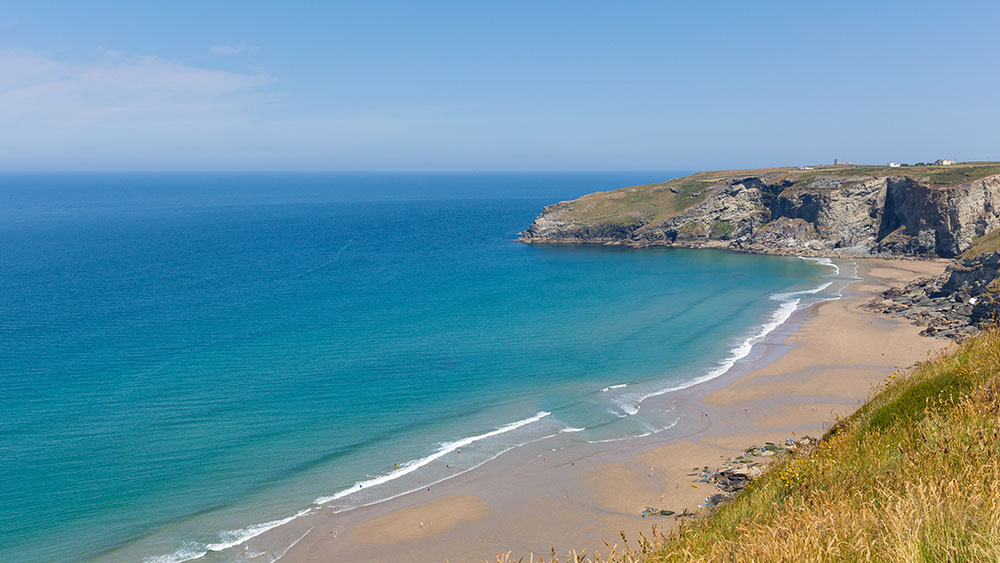
Bossiney Cove
Further up the peninsula, not far from Tintagel, is Bossiney Cove. Completely hidden by the high tide, this wonderful cove is found only via an old path and steep steps which lead you down to the soft, sandy beach. The tall, narrow arch on the western cliff face is known as the Elephant Rock and forms a mighty pillar against the pounding Atlantic swells. On a clear day, the cove is an absolute dream and remains one of the area’s best kept secrets. Other local landmarks close by include St Piran’s Well, said to have medicinal qualities, and St Nectan’s Glen and waterfall – according to Cornish folklore the realm of fairies, piskies and sprites.
Backways Cove
Ramblers relish the walk from Dennis Point to Backways Cove, enjoying the views of Trebarwith Strand as they go. This rocky cleave is backed by a slate quarried gorge and a stream that weaves through the boulders to find the Atlantic. Towering cliffs overlook the cove and explorers can clamber down via a rocky path worn-in alongside the streambed. On blustery days the waves smash on the reef and whip up sea foam blown into the cove – quite a spectacle! Many are captivated by the rugged beauty of this tumbled shore, but ghoulish tales of perishing shipwrecked sailors howling in the night had this moody bay feature in The International Directory of Haunted Places.
Merlin’s Cave
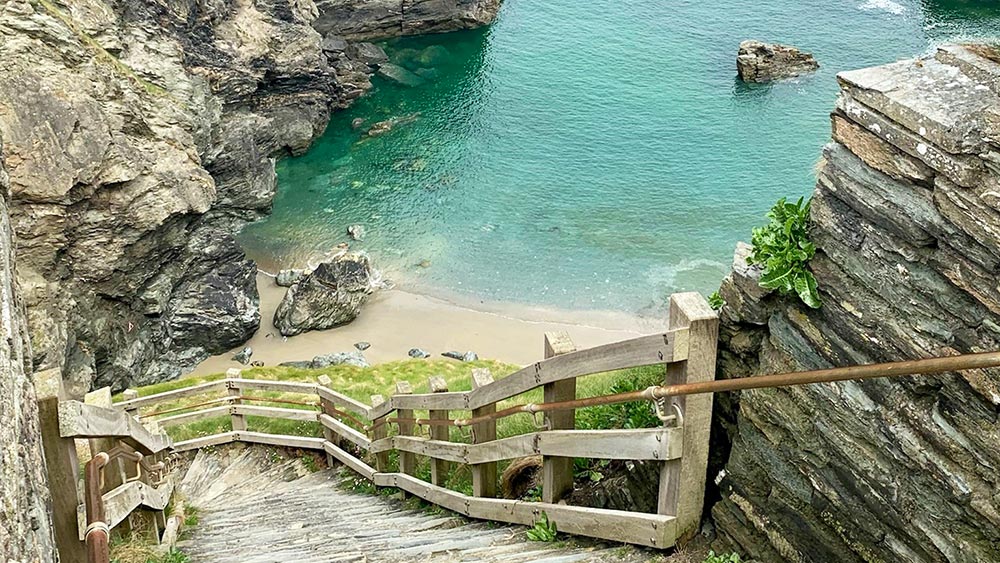
We finish our tour at one of the UK’s most mystical beaches, steeped in Arthurian legend. Follow the cliff path down to the shoreline below the ruins of Tintagel Castle to the rocky vaults of Merlin’s Cave, a hollow stretch that passes under Tintagel Island, and at low tide joins the little beaches of Tintagel Haven and West Cove. The cave was the focal point for poet Alfred Tennyson in his collection of Arthurian poems entitled Idylls of the King, where Tennyson describes the fabled scene when Merlin plucks Arthur the babe from the monstrous seas and carries him to safety. The cave was created by centuries of sea erosion, and now has the bearded profile of Merlin the sorcerer chiselled into the rockface of its sacred walls. It holds its place as one of Tintagel Castle’s best kept secrets, and is the perfect escape from the tourist trail.
Search our portfolio of holiday cottages in North Cornwall
